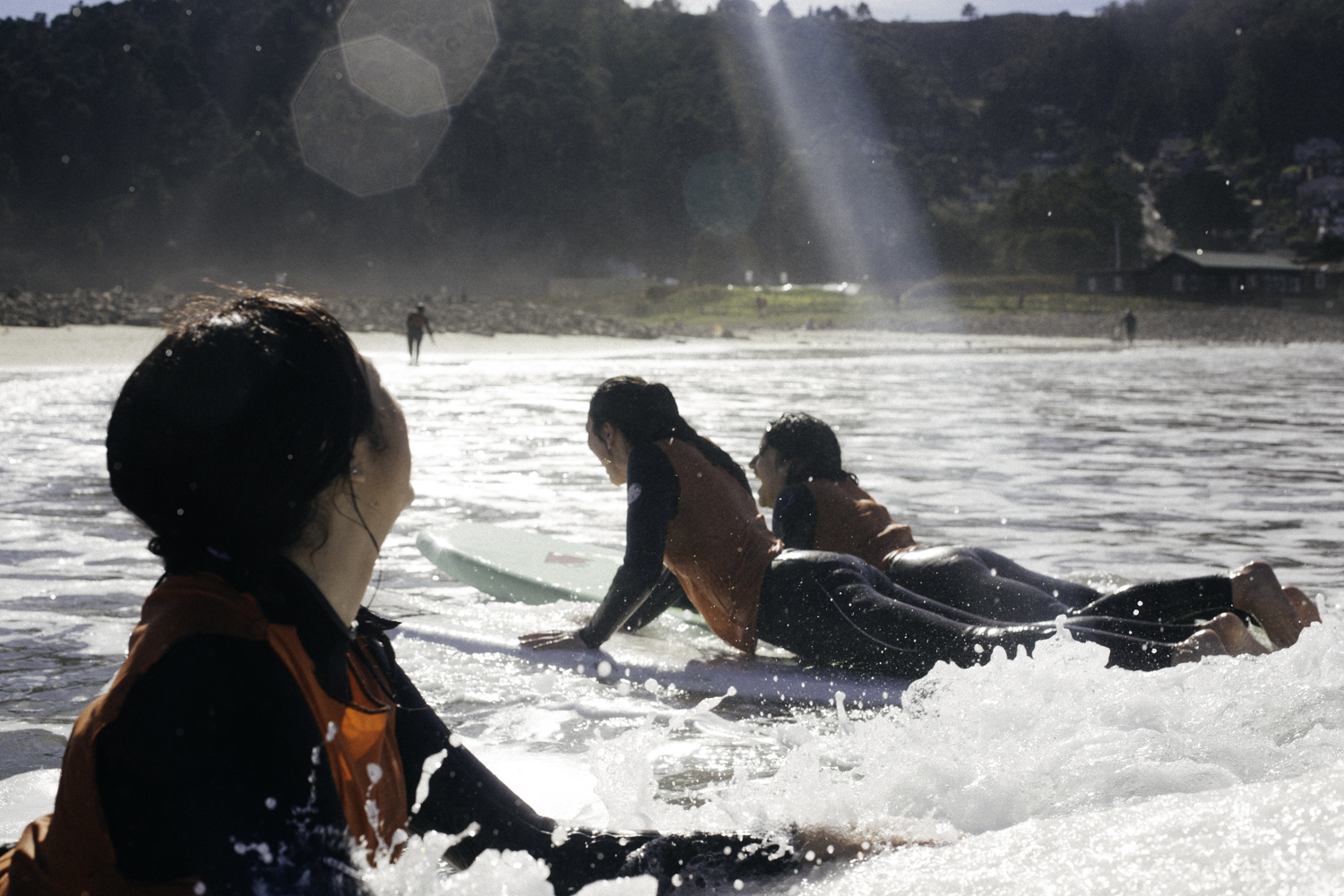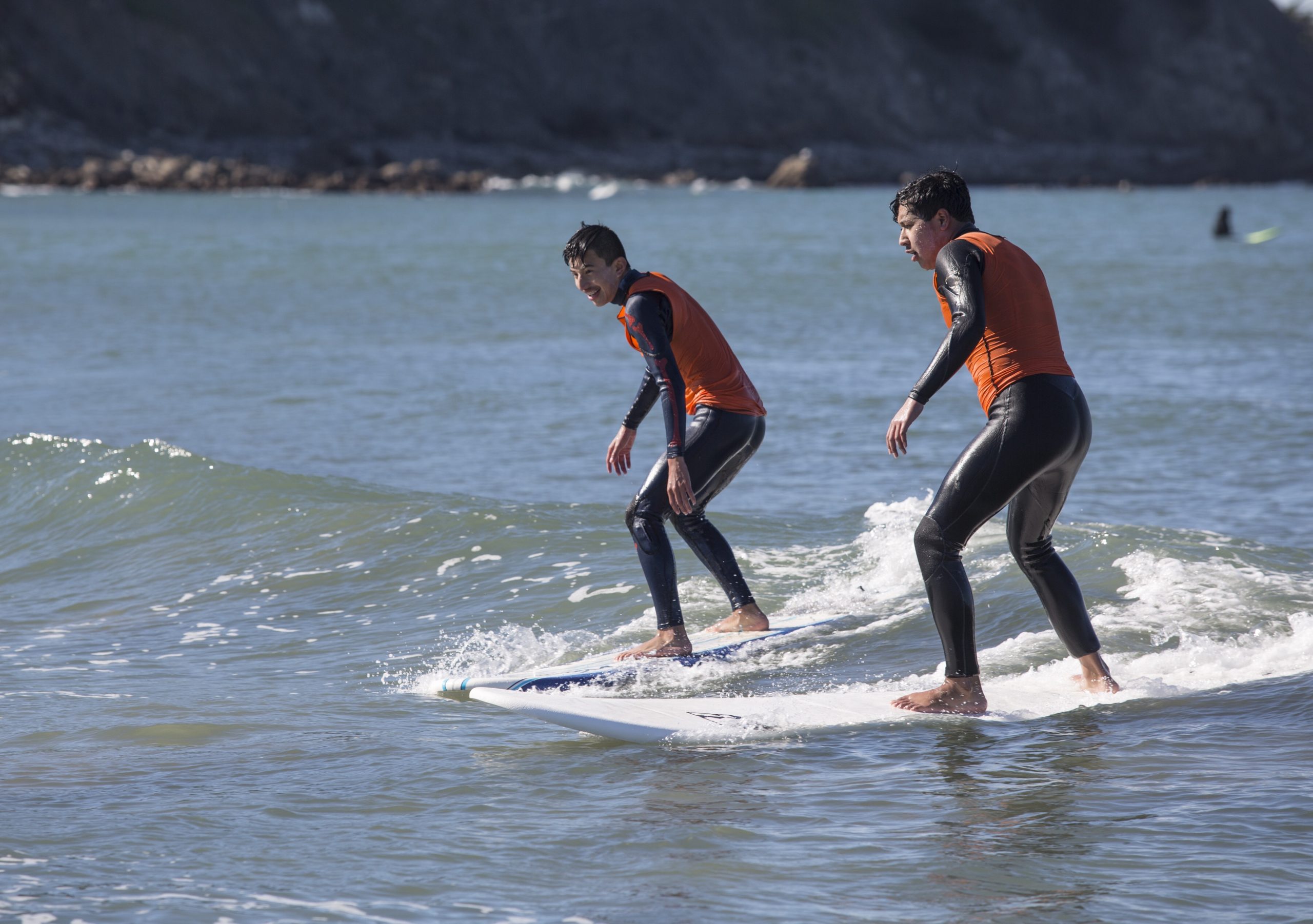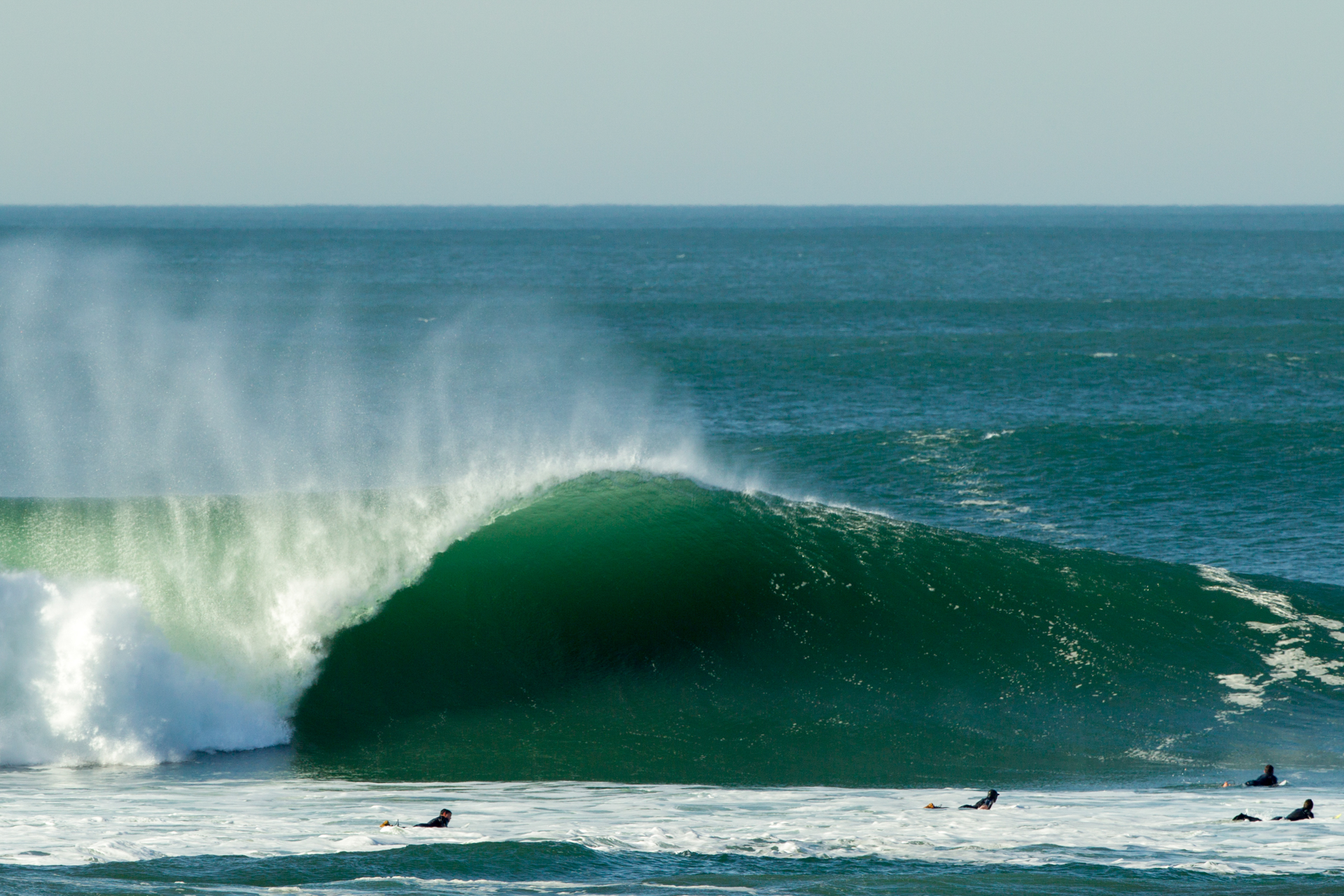This Is How You Create Diversity In Surfing
One organization in San Francisco offers a compelling path.
As black squares melt further down the feed and the news cycle returns to Covid and Karen, San Francisco’s City Surf Project keeps doing its thing — taking underserved youth, mostly black and Latinx kids from SF’s poorest neighborhoods, surfing. A lot. It’s what they’ve been doing since 2015, long before the most recent BLM tsunami broke on American shores.
Last week I met CSP’s founder, Johnny Irwin, at their HQ in San Francisco’s Mission District. A converted tire shop with racks of wetsuits and boards stacked ceiling-high, alongside an office / hang-out space where Johnny can have meetings and CSP students can review footage, it’s the perfect urban surf club. It also has world-class burritos right around the corner, so we grabbed two and returned to the parking lot. With a couple of folding chairs six feet apart, we ate our burritos and talked about race in surfing, how to increase diversity in the lineups, and CSP’s role in it all.
As we spoke, a van returned from Pacifica with frothing, masked Groms Of Color recounting their rides as they unloaded their gear. Simultaneously, a new batch of kids showed up to make the trip down the coast. Temperatures checked. Hands sanitized. Wetsuits and boards loaded. They hopped into the van and peeled out toward 280.
“We’re not taking kids surfing,” Johnny tells me. “We’re creating surfers.”

City Surf Project, creating surfers (and joy). Photo: Nate Lawrence
Stab: Why is there currently such a lack of diversity in surfing?
Johnny Irwin: One reason has to do with who is able to live near the beach, since most beach towns are inhabited by mainly white and upper-middle class people. In coastal cities, surfing is not a prominent sport and takes a back seat to what are thought of as “urban” sports. Another huge factor is swimming, and who has traditionally been afforded access to swim lessons and pools. There is historical racism here. During slavery, black people were not allowed to learn to swim as a way to keep them from running or swimming away. These restrictions continued with the Jim Crow laws that restricted blacks’ access to public pools. Since swimming and surfing are tied together like crawling and walking, there has been a huge barrier put up for blacks to enter the sport. The film White Wash, by Ted Woods and Airrion Copeland with Selema Masekela, covers this really well. In my opinion these are the two biggest factors, which are perpetuated by surf media and culture which furthers the stereotype of the white male surfer, and makes it hard for people of color to identify with the sport.
Why is it important to make our lineups more diverse?
I have seen firsthand the effect that surfing can have on a young person’s life. We have veterans, kids with autism, people struggling with depression and addiction, all benefiting from the sport. I also see surfing as a way to break down barriers that have kept people apart. With the current civil rights movement, we have seen how our society is so disconnected, politically and culturally. We need to find ways to bring people together who have historically not had a commonality, and I think surfing can be that platform.
How is CSP playing a part in making the lineups more diverse? Are there other important things to do that are maybe beyond your guys’ scope?
We run consistent, intensive programs. We aren’t just taking kids surfing, we are creating surfers. Every young person who enters our program will get a chance to learn to swim, surf, and the importance of connecting with the environment. We go on 150 surf outings a year and the majority of our participants are youth of color. And when youth complete our program we give them the resources they need to continue surfing.
A challenge that we face is making surfing a welcoming place where youth of color feel like they belong. When they open a surf mag or website, they don’t see themselves and don’t identify as surfers. We are constantly trying to change that narrative by conveying to them that: this is your space, and you do belong here, as much as anyone else. We teach them about indigenous cultures that surfed before white males took up the sport in California and Australia. Beyond what we are doing, I think the surf industry can do more to make people of color feel like they belong in surfing.
You guys have been operating in SF for a long time. Has the BLM movement changed your approach to what you do?
On the one hand it has highlighted the work that we are doing and shown how important it is. We have received lots of new interest from the surf industry and other surfers that want to do more. On the other hand, it highlighted that we as an organization need to do more. We haven’t done enough on our part to break down the barriers of systemic racism. We need to reach more black and brown youth.
You’re white. A lot of your staff are white. How do you avoid playing the role of the “white savior”?
We want our youth of color to feel a sense of belonging in our organization but we also want them to take ownership of it as well. We have set up a SILT program, which stands for Surf Instructors in Leadership Training where our youth become young coaches and mentors for our new participants. The hope is that this program is a pathway to future employment and leadership of City Surf Project. I don’t see myself at the helm forever, I actually envision one of our youth taking over in the future.

How is CSP’s approach different from a lot of other organizations?
Other surfing organizations provide a “day at the beach” for youth to get a great experience for one day a year. We don’t feel that’s right: why give someone a nibble and not let them take a full bite? Not all of our youth become full-fledged “surfers,” but they will go through an experience where they will come out of it with a better understanding of themselves and how the ocean works. We also connect with schools to create alternative PE programs so students that participate are earning school credit, which is important for them to see that learning doesn’t have to be in the classroom.
How can you expand this value to other cities beyond San Francisco?
City Surf Project can be a model for other cities that have similar disparities that we do. But each place has its own set of needs as well as barriers to access. What may work in San Francisco will be completely different in another city across the country or world. What’s important is learning what each place needs. It’s about exposure and trying to break down systemic barriers that have been put in place, whatever those may be.
Your organization was a big part of Nate Lawrence and Leo Maxam’s recent book, City Surf. Has that exposure helped you guys?
The City Surf Book did a great job of going in-depth in the stories of our youth and how our surfing’s impact on them. It was all told through the lens of the City and the unique neighborhoods that our youth come from. It did a really good job of showing the “City” of City Surf Project as well and how surfing can sprout in an urban landscape.

This is where CSP students go for graduation. Photo: Nate Lawrence
How are you guys able to currently operate with Covid?
Although many surfing programs are canceling or going “virtual” with the Covid restrictions, we felt we needed to get our youth outside and out of isolation. Too much time indoors is detrimental to these kids’ mental health and we had to find a way to get them to de-stress on the waves. But we had to do so in a safe manner. So this summer we’re running our SILT program in a socially distant manner. It is looking like school will not be back in the classroom for the start of the school year in the US, so we are going to be offering an outdoor educational resource to our schools. Students will be able to learn about themselves and the environment on the waves. These next few months will show how important surfing is to mental health.
Click here to learn more about, and support, City Surf Project.





Comments
Comments are a Stab Premium feature. Gotta join to talk shop.
Already a member? Sign In
Want to join? Sign Up